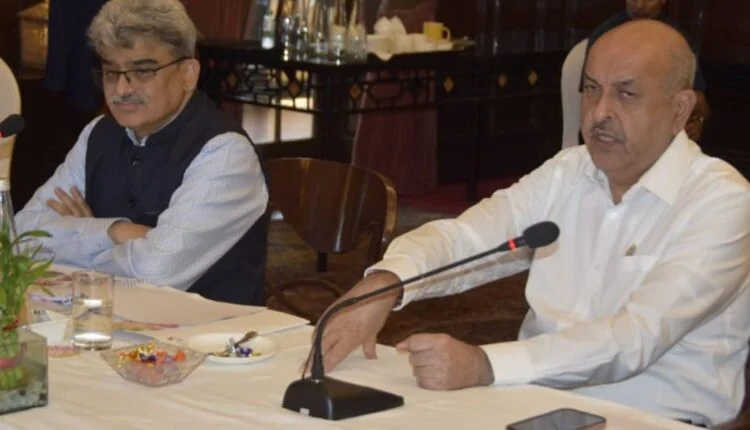The high-level review meeting chaired by Prime Minister’s Advisor Tarun Kapoor on Monday focussed on Jammu and Kashmir’s development journey. With a wide-ranging agenda spanning energy, infrastructure, healthcare, urban mobility, digital connectivity and governance reform, the discussion reflected both the complexity and urgency of the government’s approach to transforming the UT. The session began with a review of major hydroelectric projects. Projects like Pakal Dul (1000 MW), being developed at a cost of Rs 12,757 crore and scheduled for completion by December 2026, were prominently discussed. Besides, updates were also shared on Kiru (624 MW) with 60% physical progress, Kwar (540 MW) at 22% progress and Ratle (850 MW) currently at 23% physical progress. Other strategic projects like Sawalkote, Uri Phase-II, Kirthai-II, Bursar and Tulbul Storage also came under focus. Yet the figures—whether it’s 60% or 23% physical progress—raise important questions about the pace of work, inter-agency coordination and the long-term environmental and social trade-offs of such large-scale interventions. There’s recognition that these projects are essential, but there’s also a need to ensure they don’t replicate the delays or dislocations seen in other parts of the country. Rail and road connectivity came up as essential tools not just for faster transportation but for opening up internal markets and linking remote regions to economic opportunities. Projects like the USBRL and the various new rail corridors are promising on paper, especially for horticulture-based economies that rely on timely transport. Similarly, the assessment of road infrastructure revealed practical challenges—like shortages of construction material and permit issues—which, if unaddressed, can significantly slow momentum. In the health sector, the dual development of AIIMS in Jammu and Srinagar reflects a strong commitment to bringing tertiary care closer to home. While the Jammu AIIMS is operational, the Kashmir campus is approaching completion. These institutions have the potential to transform regional healthcare access, but only if the supporting ecosystem—trained faculty, reliable infrastructure, and timely procurement—is fully functional. Healthcare delivery is not just about physical buildings; it’s about the systems and people that sustain them. The meeting also highlighted a growing environmental consciousness, particularly with the review of the Dal Lake restoration efforts and solar energy push under the PM Surya Ghar scheme. Urban infrastructure in cities like Jammu and Srinagar is receiving significant attention through initiatives like PM eBus Sewa, Intelligent Traffic Management Systems, and Smart City projects. These initiatives can make daily life more efficient and sustainable, but their true value will be measured by how accessible and responsive they are to citizens. Urban transformation cannot be purely cosmetic—it has to align with the needs and lived realities of the population. Digital empowerment emerged as another major theme, with the BharatNet rollout and IT governance reforms through BISAG-N aimed at bridging the digital divide. If implemented effectively, these steps could revolutionise access to government services, improve transparency and bring marginalized communities into the mainstream. However, the transition to digital governance must also be inclusive—ensuring that connectivity reaches the remotest villages, and that digital literacy is addressed alongside infrastructure.
Development Drive

